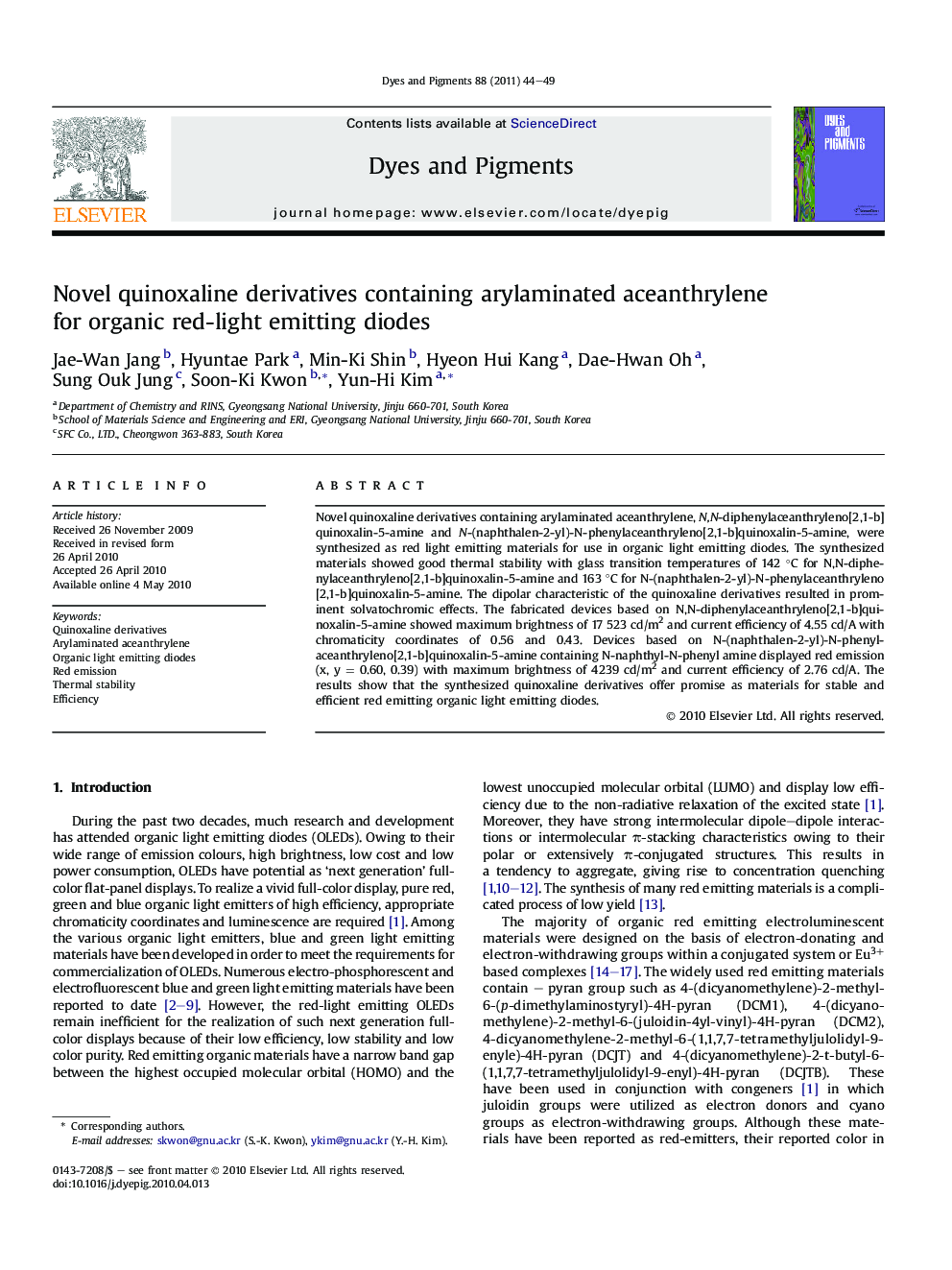| Article ID | Journal | Published Year | Pages | File Type |
|---|---|---|---|---|
| 177306 | Dyes and Pigments | 2011 | 6 Pages |
Novel quinoxaline derivatives containing arylaminated aceanthrylene, N,N-diphenylaceanthryleno[2,1-b]quinoxalin-5-amine and N-(naphthalen-2-yl)-N-phenylaceanthryleno[2,1-b]quinoxalin-5-amine, were synthesized as red light emitting materials for use in organic light emitting diodes. The synthesized materials showed good thermal stability with glass transition temperatures of 142 °C for N,N-diphenylaceanthryleno[2,1-b]quinoxalin-5-amine and 163 °C for N-(naphthalen-2-yl)-N-phenylaceanthryleno[2,1-b]quinoxalin-5-amine. The dipolar characteristic of the quinoxaline derivatives resulted in prominent solvatochromic effects. The fabricated devices based on N,N-diphenylaceanthryleno[2,1-b]quinoxalin-5-amine showed maximum brightness of 17 523 cd/m2 and current efficiency of 4.55 cd/A with chromaticity coordinates of 0.56 and 0.43. Devices based on N-(naphthalen-2-yl)-N-phenylaceanthryleno[2,1-b]quinoxalin-5-amine containing N-naphthyl-N-phenyl amine displayed red emission (x, y = 0.60, 0.39) with maximum brightness of 4239 cd/m2 and current efficiency of 2.76 cd/A. The results show that the synthesized quinoxaline derivatives offer promise as materials for stable and efficient red emitting organic light emitting diodes.
